Advanced Architectures for Next Generation Wireless Networks
Pascal Lorenz, PhD
University of Haute Alsace, France
Emerging Internet Quality of Service (QoS) mechanisms are expected to enable wide spread use of real time services such as VoIP and videoconferencing. The “best effort” Internet delivery cannot be used for the new multimedia applications. New technologies and new standards are necessary to offer Quality of Service (QoS) for these multimedia applications. Therefore new communication architectures integrate mechanisms allowing guaranteed QoS services as well as high rate communications.
The service level agreement with a mobile Internet user is hard to satisfy, since there may not be enough resources available in some parts of the network the mobile user is moving into. The emerging Internet QoS architectures, differentiated services and integrated services, do not consider user mobility. QoS mechanisms enforce a differentiated sharing of bandwidth among services and users. Thus, there must be mechanisms available to identify traffic flows with different QoS parameters, and to make it possible to charge the users based on requested quality. The integration of fixed and mobile wireless access into IP networks presents a cost effective and efficient way to provide seamless end-to-end connectivity and ubiquitous access in a market where the demand for mobile Internet services has grown rapidly and predicted to generate billions of dollars in revenue. This tutorial covers to the issues of QoS provisioning in heterogeneous networks and Internet access over future 5G wireless networks. It discusses the characteristics of the Internet, mobility and QoS provisioning in wireless, IoT and mobile IP networks. This tutorial also covers routing, security, baseline architecture of the inter-networking protocols and end to end traffic management issues.
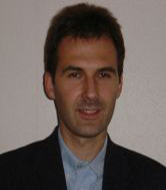 Pascal Lorenz received his M.Sc. (1990) and Ph.D. (1994) from the University of Nancy, France. Between 1990 and 1995 he was a research engineer at WorldFIP Europe and at Alcatel-Alsthom. He is a professor at the University of Haute-Alsace, France, since 1995. His research interests include QoS, wireless networks and high-speed networks. He is the author/co-author of 3 books, 3 patents and 200 international publications in refereed journals and conferences.
Pascal Lorenz received his M.Sc. (1990) and Ph.D. (1994) from the University of Nancy, France. Between 1990 and 1995 he was a research engineer at WorldFIP Europe and at Alcatel-Alsthom. He is a professor at the University of Haute-Alsace, France, since 1995. His research interests include QoS, wireless networks and high-speed networks. He is the author/co-author of 3 books, 3 patents and 200 international publications in refereed journals and conferences.
He was Technical Editor of the IEEE Communications Magazine Editorial Board (2000-2006), IEEE Networks Magazine since 2015, IEEE Transactions on Vehicular Technology since 2017, Chair of IEEE ComSoc France (2014-2018), Financial chair of IEEE France (2017-2019), Chair of Vertical Issues in Communication Systems Technical Committee Cluster (2008-2009), Chair of the Communications Systems Integration and Modeling Technical Committee (2003-2009), Chair of the Communications Software Technical Committee (2008-2010) and Chair of the Technical Committee on Information Infrastructure and Networking (2016-2017). He has served as Co-Program Chair of IEEE WCNC’2012 and ICC’2004, Executive Vice-Chair of ICC’2017, TPC Vice Chair of Globecom’2018, Panel sessions co-chair for Globecom’16, tutorial chair of VTC’2013 Spring and WCNC’2010, track chair of PIMRC’2012 and WCNC’2014, symposium Co-Chair at Globecom 2007-2011, ICC 2008-2010, ICC’2014 and ‘2016. He has served as Co-Guest Editor for special issues of IEEE Communications Magazine, Networks Magazine, Wireless Communications Magazine, Telecommunications Systems and LNCS. He is associate Editor for International Journal of Communication Systems (IJCS-Wiley), Journal on Security and Communication Networks (SCN-Wiley) and International Journal of Business Data Communications and Networking, Journal of Network and Computer Applications (JNCA-Elsevier).
He is senior member of the IEEE, IARIA fellow and member of many international program committees. He has organized many conferences, chaired several technical sessions and gave tutorials at major international conferences. He was IEEE ComSoc Distinguished Lecturer Tour during 2013-2014.
Tensor Decompositions in Julia with Application to Computer Vision
Lana Periša, PhD
University of Split, Croatia
Julia programming language is a free flexible dynamic language, appropriate for scientific and numerical computing, with performance comparable to traditional statically-typed languages.
In this tutorial we will cover the basics of Julia, learn how to work with n-dimensional arrays, i.e. tensors, using the TensorToolbox package, and use JuliaImages package to work with images. Tensors have shown to be useful in many applications of machine learning, since they preserve the structure of the data, and decompositions such as CP and Tucker decompositions are widely used for data analysis and dimensionality reduction. We will focus on tensor decompositions suitable for computer vision problems, such as face recognition and shadow reduction, and use Julia to provide solutions.
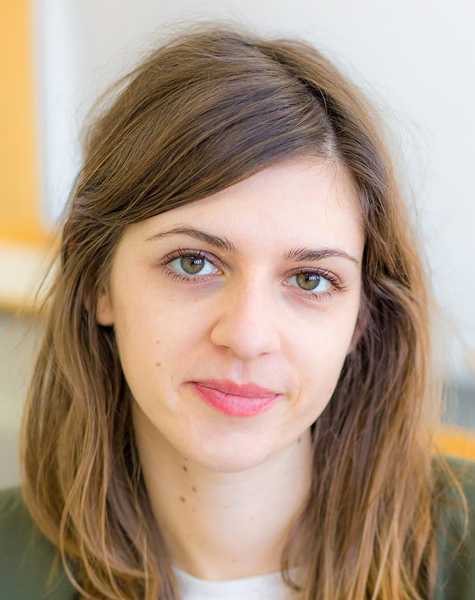 Lana Periša received her PhD in Mathematics in 2017 from the Faculty of Science, University of Zagreb, and is currently working as a postdoctoral researcher at the Faculty of Electrical Engineering, Mechanical Engineering and Naval Architecture, University of Split. Her research interest include numerical linear algebra, tensor decompositions and tensor networks algorithms, with applications in computer science and quantum physics. She did a PostDoc from 2018 to 2019 at the École polytechnique fédérale de Lausanne in Switzerland in the group Numerical algorithms and high-performance computing and was a visiting scientist at the Lawrence Berkeley National Laboratory in California in 2018 in the Scalable Solvers Group. She has been working with programming language Julia since its beginnings and has developed the TensorToolbox package, a registered Julia package for tensor computations.
Lana Periša received her PhD in Mathematics in 2017 from the Faculty of Science, University of Zagreb, and is currently working as a postdoctoral researcher at the Faculty of Electrical Engineering, Mechanical Engineering and Naval Architecture, University of Split. Her research interest include numerical linear algebra, tensor decompositions and tensor networks algorithms, with applications in computer science and quantum physics. She did a PostDoc from 2018 to 2019 at the École polytechnique fédérale de Lausanne in Switzerland in the group Numerical algorithms and high-performance computing and was a visiting scientist at the Lawrence Berkeley National Laboratory in California in 2018 in the Scalable Solvers Group. She has been working with programming language Julia since its beginnings and has developed the TensorToolbox package, a registered Julia package for tensor computations.
Human Exposure to Electromagnetic Fields
Dragan Poljak and Mario Cvetković, PhD
University of Split, Croatia
This Tutorial, mostly based on the forthcoming book: Human Interaction with Electromagnetic Fields – Computational Models in Dosimetry, by Poljak and Cvetković, aims to review various aspects of human interaction with non-ionizing part of electromagnetic spectrum including both the undesired exposure from artificial sources and the biomedical applications of electromagnetic fields. The tutorial covers basic aspectsof environmental electromagnetic fields, coupling mechanisms between humans and static electric, static magnetic, and time-varying fields, established biological effects of electromagnetic fields from static to high-frequency range, international safety guidelines related to limiting human exposure to those fields, including relevant exposure limits and safety measures, electromagnetic-thermal dosimetry models and the related analytical/numerical solution methods.
First, some theoretical and experimental methods of incident field dosimetry for the assessment of external fields due to low frequency (LF) and high frequency (HF) sources are presented and accompanied with a number of examples deals with power lines, transformer substations, PLC systems, RFID antennas and radio base stations.
Furthermore, some electromagnetic-thermal dosimetry methods for the assessment of human exposure to low frequency (LF), high frequency (HF) and transient electromagnetic radiation are given. In particular, the use of integral/differential equation formulations and related numerical solution procedures (primarily based on the use of Boundary Element Method – BEM, and Finite Element method – FEM) for the calculation of induced current densities, internal fields and specific absorption rate (SAR) are discussd in detail. For HF exposures the related temperature increase in tissues is dominant effect and is therefore carried out. Computational examples pertaining to various realistic exposure scenarios, such as; pregnant woman/foetus exposed to low frequency (LF) fields, the human eye, the human brain and the human head exposed to HF electromagnetic fields will be given. Illustrative examples of thermal dosimetry stemming from the brain, eye and head exposed to HF fields are shown, as well.
The obtained numerical results for induced current densities, internal fields and SAR are compared against exposure limits proposed by ICNIRP (International Commission on Non Ionizing Radiation Protection).
This is followed by some examples of biomedical applications of electromagnetic fields, including the transcranial magnetic stimulation (TMS), transcranial electrical stimulation (TES), but also some electrotherapy and magnetotherapy techniques. Also, some illustrative numerical examples related to thermal modeling of various ophthalmological procedures will be given.
Finally, the last part of the Tutorial deals with an application of stochastic collocation (SC) for stochastic modeling (combined with deterministic approaches) of bioelectromagnetic phenomena.
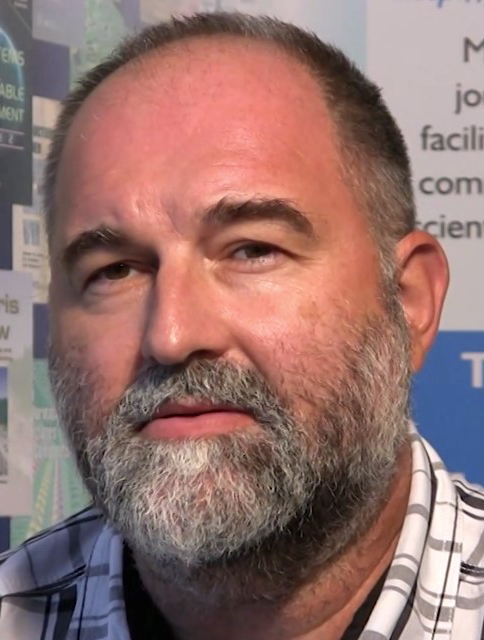 Dragan Poljak was born on 10 October 1965. He received his BSc in 1990, his MSc in 1994 and PhD in electrical engineering in 1996 from the University of Split, Croatia. He is the Full Professor at Department of Electronics, Faculty of electrical engineering, mechanical engineering and naval architecture at the University of Split, and he is also Adjunct Professor at Wessex Institute of Technology. His research interests include frequency and time domain computational methods in electromagnetics, particularly in the numerical modelling of wire antenna structures, and numerical modelling applied to environmental aspects of electromagnetic fields. To date Professor Poljak has published nearly 200 journal and conference papers in the area of computational electromagnetics, seven authored books and one edited book, by WIT Press, Southampton-Boston, and one book by Wiley, New Jersey. Professor Poljak is a member of IEEE, a member of the Editorial Board of the journal Engineering Analysis with Boundary Elements, and co-chairman of many WIT International Conferences. He is also editor of the WIT Press Series Advances in Electrical Engineering and Electromagnetics. He was awarded by several prizes for his carrier achievements, such as National Prize for Science (2004), Croatian section of IEEE annual Award (2016).
Dragan Poljak was born on 10 October 1965. He received his BSc in 1990, his MSc in 1994 and PhD in electrical engineering in 1996 from the University of Split, Croatia. He is the Full Professor at Department of Electronics, Faculty of electrical engineering, mechanical engineering and naval architecture at the University of Split, and he is also Adjunct Professor at Wessex Institute of Technology. His research interests include frequency and time domain computational methods in electromagnetics, particularly in the numerical modelling of wire antenna structures, and numerical modelling applied to environmental aspects of electromagnetic fields. To date Professor Poljak has published nearly 200 journal and conference papers in the area of computational electromagnetics, seven authored books and one edited book, by WIT Press, Southampton-Boston, and one book by Wiley, New Jersey. Professor Poljak is a member of IEEE, a member of the Editorial Board of the journal Engineering Analysis with Boundary Elements, and co-chairman of many WIT International Conferences. He is also editor of the WIT Press Series Advances in Electrical Engineering and Electromagnetics. He was awarded by several prizes for his carrier achievements, such as National Prize for Science (2004), Croatian section of IEEE annual Award (2016).
In 2011 professor Poljak became a member of WIT Board of Directors. From 2011 to 2015 he was the Vice-dean for research at the Faculty of electrical engineering, mechanical engineering and naval architecture. In June 2013 professor Poljak became a member of the board of the Croatian Science Foundation.
He is currently involved in one COST project, ITER physics EUROfusion collaboration and one national center for excellence in research for technical sciences.
He served a co-chair of Working Group 2 of IEEE/International Committee on Electromagnetic Safety (ICES) Technical Committee 95 SC6 EMF Dosimetry Modeling.
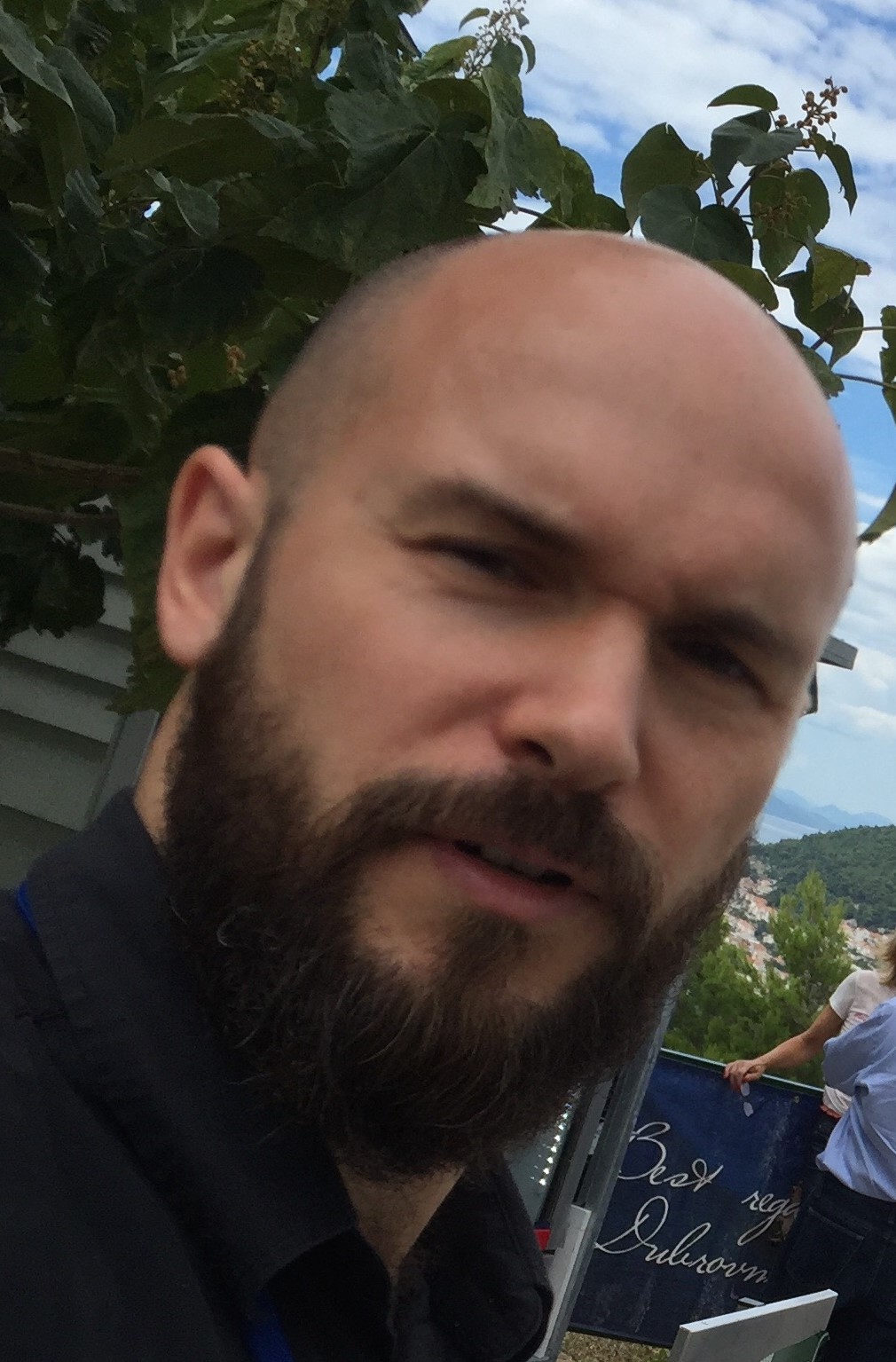 Mario Cvetković received his BSc in electrical engineering from the University of Split, Croatia in 2005. In 2009 he obtained MPhil degree from the Wessex Institute of Technology, University of Wales, UK. In December 2013 he received PhD from University of Split, Croatia. He is assistant professor at the Faculty of electrical engineering, mechanical engineering and naval architecture (FESB), University of Split were he teaches fundamentals of electrical engineering course. In 2010, he held a seminar to graduate and postgraduate students at the Technical University of Ilmenau, Germany, and in 2014 and 2018 he held seminars to PhD students on the numerical methods in engineering at the Malardalen University, Vasteras, Sweden. He is a recipient of the “Best Student Paper Award”, awarded at the 16th edition of the international conference SoftCOM 2008. At the Scientific Novices Seminar held in 2012, he was awarded with the recognition for his previous scientific achievements. To date he has published more than 50 journal and conference papers and several book chapters (including those for CRC Press and Springer). He is a member of the IEEE/International Committee on Electromagnetic Safety (ICES) Technical Committee 95 SC6 EMF Dosimetry Modeling.
Mario Cvetković received his BSc in electrical engineering from the University of Split, Croatia in 2005. In 2009 he obtained MPhil degree from the Wessex Institute of Technology, University of Wales, UK. In December 2013 he received PhD from University of Split, Croatia. He is assistant professor at the Faculty of electrical engineering, mechanical engineering and naval architecture (FESB), University of Split were he teaches fundamentals of electrical engineering course. In 2010, he held a seminar to graduate and postgraduate students at the Technical University of Ilmenau, Germany, and in 2014 and 2018 he held seminars to PhD students on the numerical methods in engineering at the Malardalen University, Vasteras, Sweden. He is a recipient of the “Best Student Paper Award”, awarded at the 16th edition of the international conference SoftCOM 2008. At the Scientific Novices Seminar held in 2012, he was awarded with the recognition for his previous scientific achievements. To date he has published more than 50 journal and conference papers and several book chapters (including those for CRC Press and Springer). He is a member of the IEEE/International Committee on Electromagnetic Safety (ICES) Technical Committee 95 SC6 EMF Dosimetry Modeling.
New Recording and Data Analysis Techniques for Electroencephalography
Jens Haueisen, PhD
Technische Universität Ilmenau, Germany
Multichannel Electroencephalography (EEG) is widely used in clinical neurology and neuroscientific research. Recording of EEG is currently performed in specialized labs using a time consuming and error prone procedure with wet electrodes. Evaluation of EEG recordings requires elaborate work from trained specialists and is challenging because of the large amount of data including the data’s many dimensions and because of the high noise levels. Concurrently, there is a growing interest in online EEG data processing for brain-computer-interfaces and neurofeedback applications. Consequently, new approaches for EEG recording and data analysis are required.
In this talk, I will present two new approaches for EEG recording and data analysis.
First, recent advances in dry high density EEG recording techniques will be reviewed. Challenges and benefits of dry high density EEG will be demonstrated on a novel 256-channel EEG cap with dry electrodes. In a proof of principle study the novel 256-channel dry EEG cap is compared to a conventional 256-channel wet EEG cap using a previously established validation paradigms. Our results demonstrate that resting state EEG, eye movements, alpha activity, and pattern reversal visual evoked potentials can be recorded with the 256-channel EEG cap with dry electrodes with short preparation time and without significant differences to recordings with a conventional cap based on wet electrodes. This new technology will enable new fields of application like brain-computer-interfaces and mobile EEG acquisition.
Second, the open source MNE-CPP project will be discussed, which offers a framework to develop offline as well as online data analysis and processing software for Electroencephalography and Magnetoencephalography (MEG). MNE-CPP supports online data acquisition for EEG (e.g. eegosports) and MEG systems (e.g. Elekta Neuromag Vectorview). MNE-CPP is structured into libraries, which guarantee a modular and easily extendable architecture. MNE-CPP hosts libraries to support various data formats such as the widely used Fiff and FreeSurfer formats. It keeps the external dependencies to a minimum, namely Qt5 and Eigen. We implemented a brain-computer-interfaces based on steady-state-visual-evoked-potentials for an online spelling application. With this paradigm, we successfully tested the acquisition and online processing of EEG data, recorded with newly supported eegosports amplifiers and a dry electrode cap setup.
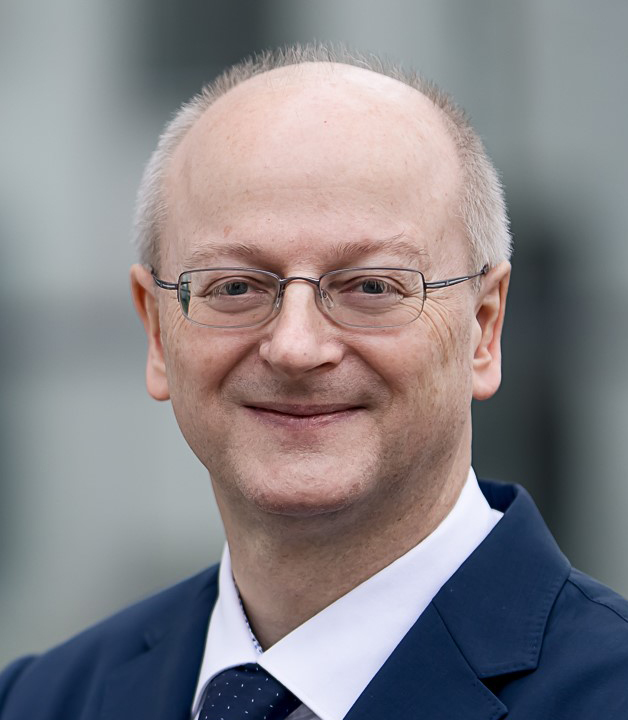 Jens Haueisen received a M.S. and a Ph.D. in electrical engineering from Technische Universität, Germany, in 1992 and 1996, respectively. From 1996 to 1998 he worked as a Post-Doc and from 1998 to 2005 as the head of the Biomagnetic Center, Friedrich-Schiller-University, Jena, Germany. In 2003 he received the habilitation (professorial thesis). Since 2005 he is Professor of Biomedical Engineering and directs the Institute of Biomedical Engineering and Informatics at Technische Universität Ilmenau, Germany. He has authored and co-authored more than 200 research articles in peer reviewed scientific journals and serves on two editorial boards. From 2002 to 2004 he served as President and from 2004 to 2006 as Secretary General of the International Advisory Board on Biomagnetism. Since 2005, he is chair of the study program development commission and chair of the examination commission of the Bachelor and Master program “Biomedical Engineering”. He is member of the academic senate of Technische Universität Ilmenau and full member of the Saxon Academy of Science. Since 2019, he is chairman of the board of the German Society for Biomedical Engineering and member of the board of VDE.
Jens Haueisen received a M.S. and a Ph.D. in electrical engineering from Technische Universität, Germany, in 1992 and 1996, respectively. From 1996 to 1998 he worked as a Post-Doc and from 1998 to 2005 as the head of the Biomagnetic Center, Friedrich-Schiller-University, Jena, Germany. In 2003 he received the habilitation (professorial thesis). Since 2005 he is Professor of Biomedical Engineering and directs the Institute of Biomedical Engineering and Informatics at Technische Universität Ilmenau, Germany. He has authored and co-authored more than 200 research articles in peer reviewed scientific journals and serves on two editorial boards. From 2002 to 2004 he served as President and from 2004 to 2006 as Secretary General of the International Advisory Board on Biomagnetism. Since 2005, he is chair of the study program development commission and chair of the examination commission of the Bachelor and Master program “Biomedical Engineering”. He is member of the academic senate of Technische Universität Ilmenau and full member of the Saxon Academy of Science. Since 2019, he is chairman of the board of the German Society for Biomedical Engineering and member of the board of VDE.
His research interests include the investigation of active and passive bioelectric and biomagnetic phenomena and medical technology for ophthalmology.
Ground Penetrating Radar: Technology, Methodology, Applications, and Research perspectives
Lara Pajewski, PhD
Sapienza University of Rome, Italy
Ground Penetrating Radar (GPR) is a safe, advanced, reliable, non-invasive and non-destructive testing technique that can be effectively used for inspecting the subsurface as well as the internal structure of natural and man-made objects. During GPR surveys, a source sends ultra-wideband electromagnetic signals into the ground or object under test. At the boundaries where the electromagnetic properties of media change, the electromagnetic waves undergo transmission, reflection, refraction, and scattering. The radar sensors measure the amplitudes and travel times of the signals returning to the surface, which can be analyzed and interpreted to estimate the geometric and physical properties of the monitored subsurface or target. To obtain the best results, GPR has to be used by qualified personnel, familiar with both the physical principles of the method and its limitations. The interpretation of experimental data is not straightforward and shall be carried out consciously and carefully, taking into account and combining relevant information of above ground and subsurface features.
GPR started being used in the field of geosciences in the 1950s and rapidly found applications in several other areas including archaeology and cultural heritage preservation, civil and environmental engineering, agriculture and management of water resources, humanitarian mine clearance, forensics and security, localization of people trapped under debris or avalanches based on the detection of their vital signs, planetary exploration, and more. In the last decades, new developments have occurred at an increasing pace and, although the technique has now reached a level of maturity, there still are vast opportunities for further advancements and innovation.
The tutorial will cover the following topics:
1. GPR fundamentals
2. GPR technology
– Radar systems and antennas
– Equipment testing and calibration procedures
3. GPR methodology
– Survey planning and data acquisition strategies
– Methods and tools for advanced data analysis and interpretation
4. Applications and examples
Parallel to the presentation of the various subjects, information will be provided about available open resources (free software, collections of experimental data, educational material) and cutting-edge studies currently carried out by the GPR scientific community. Moreover, ideas will be given for possible research activities that could be undertaken by interested Attendees.
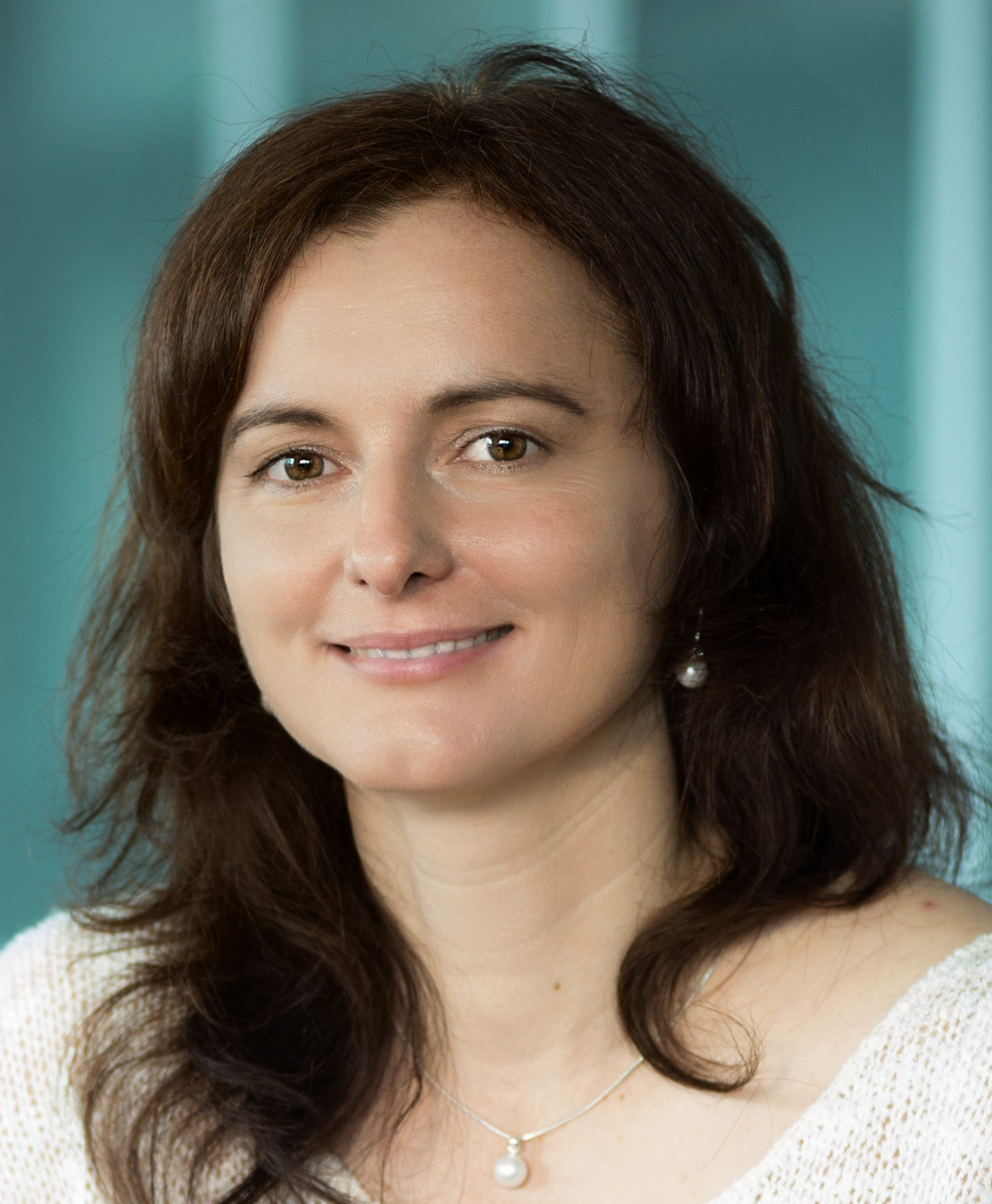 Lara Pajewski received the Laurea degree in Electronic Engineering cum laude from Roma Tre University of Rome, Italy, and the PhD in Applied Electromagnetics and Electrophysics Sciences from Sapienza University of Rome, Italy. Since November 2016, she is a Professor of Electromagnetic Fields in Sapienza University of Rome, Department of Information Engineering, Electronics and Telecommunications.
Lara Pajewski received the Laurea degree in Electronic Engineering cum laude from Roma Tre University of Rome, Italy, and the PhD in Applied Electromagnetics and Electrophysics Sciences from Sapienza University of Rome, Italy. Since November 2016, she is a Professor of Electromagnetic Fields in Sapienza University of Rome, Department of Information Engineering, Electronics and Telecommunications.
From April 2013 to October 2017 she was the Chair, Grant Holder Scientific Representative and Administrator of COST Action TU1208 “Civil Engineering Applications of Ground Penetrating Radar,” a scientific network involving more than three hundreds experts from academia and industry, from 41 Countries. From September 2017 she is the President of TU1208 GPR Association, a non-profit international network on Ground Penetrating Radar founded as a follow-up initiative of COST Action TU1208. Moreover, from September 2017 she is the Editor-in-Chief of Ground Penetrating Radar, the first peer-reviewed scientific journal dedicated to GPR. As of April 2019, Lara Pajewski is also the President of the Geosciences Instrumentation and Data Systems Division of the European Geosciences Union (EGU).
Her main research interests are in GPR technology, methodology and applications, integration of GPR with complementary non-destructive testing methods, full-wave electromagnetic modelling of complex scenarios, electromagnetic pollution and radiation protection, and science management. At Sapienza University, she currently holds the “Antennas” course for the Laurea in Information Engineering (Bachelor’s Degree) and the “Ground Penetrating Radar” course for the Laurea Magistrale in Electronic Engineering (Master Degree).
More information on Lara Pajewski is available here: http://gpradar.eu/about/larapajewski.html
